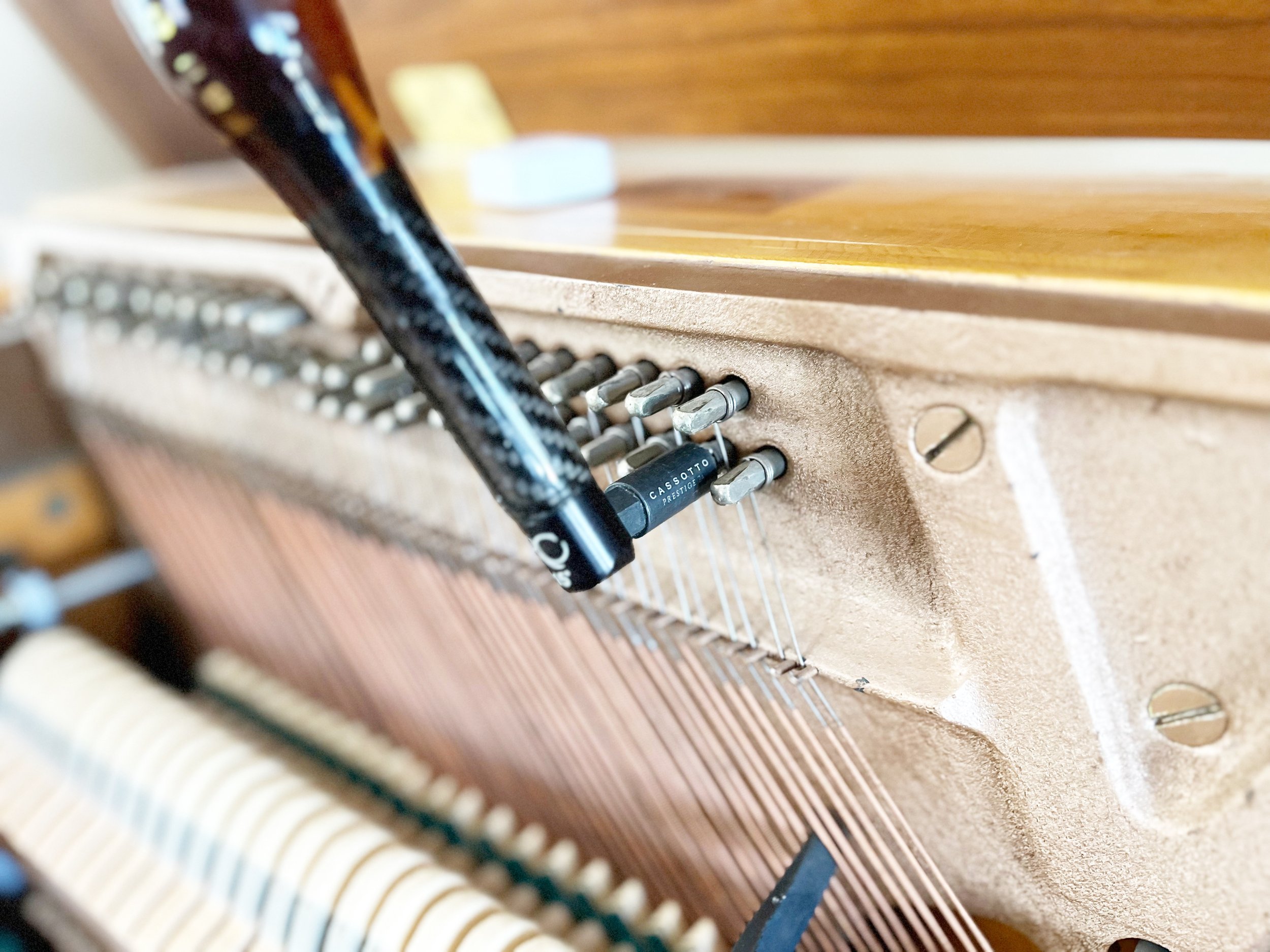
How each key plays with precision depends on how well the piano’s action is regulated.
Comprehensive tuning restructuring
Complete regulation work
Total tonal enhancements
Reset action parts & recondition felts for precision
Adjust damper timing
Thorough interior and exterior cleaning
Reduce friction and fix sticking keys
Lubricate keys (makes them easier to play)
Pedal adjustments
An example of Randy changing a piano’s key height.

9 out of 10 times, fixing a piano costs much less than buying a used one, and far less than a new one.
Vertical pianos cost between $6,000 and $20,000 while grand pianos range from $8,000 to over $100,000. If your piano is structurally sound and still has good components in the action, I can restore its tone & playing performance with a series of comprehensive adjustments.
However, if your piano is old and has worn-out parts, it might be better to consider refurbishing, restoring, or replacing it.

When You Need To Regulate
When the keys feel difficult to play
When many keys are slow or sticking
When the piano has lost its ability to play dynamically
How Often Should You Regulate?
In the first 5 years of a piano’s life after leaving the factory, then once every 8 to 10 years +/-. One of the following options should suffice as a regulation for your piano:
concert prep
mid-level regulation
complete action regulation
What is done in a Concert Prep or Complete Action Regulation?
I work on correcting the timing of the internal action parts (the components which allow all 88 keys to make the strings vibrate). I reset the amount of friction between the parts and correctly space & align them so they achieve their optimal efficiency.
Pianos have 88 hammers made of wood & felt. When is one key is played, 60 action parts move to push a hammer into the string. The more you use your piano, the more the felt becomes impacted and develops grooves. One aspect of regulation is shaping/filing/spacing/traveling/squaring the hammers (also known as tone building or “voicing”). By voicing the hammers, I can return the shape and density of each of the hammers to maximize their tone.
I also level off the heights of each of the 88 keys and how far down they travel downward. This gives the pianist more control.
How Long Will A Regulation Last?
A concert prep or complete action regulation can last for years or even decades. Much of it depends on the quality of the materials, the amount of use the piano receives, & how consistent the humidity surrounding the piano is.
